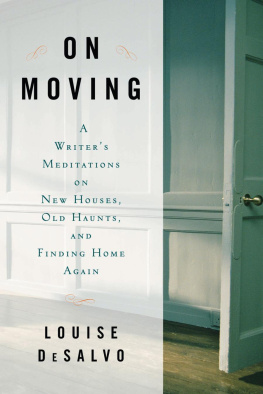Trubek - A skeptics guide to writers houses
Here you can read online Trubek - A skeptics guide to writers houses full text of the book (entire story) in english for free. Download pdf and epub, get meaning, cover and reviews about this ebook. City: Philadelphia, United States, year: 2011, publisher: University of Pennsylvania Press, genre: Detective and thriller. Description of the work, (preface) as well as reviews are available. Best literature library LitArk.com created for fans of good reading and offers a wide selection of genres:
Romance novel
Science fiction
Adventure
Detective
Science
History
Home and family
Prose
Art
Politics
Computer
Non-fiction
Religion
Business
Children
Humor
Choose a favorite category and find really read worthwhile books. Enjoy immersion in the world of imagination, feel the emotions of the characters or learn something new for yourself, make an fascinating discovery.

- Book:A skeptics guide to writers houses
- Author:
- Publisher:University of Pennsylvania Press
- Genre:
- Year:2011
- City:Philadelphia, United States
- Rating:4 / 5
- Favourites:Add to favourites
- Your mark:
A skeptics guide to writers houses: summary, description and annotation
We offer to read an annotation, description, summary or preface (depends on what the author of the book "A skeptics guide to writers houses" wrote himself). If you haven't found the necessary information about the book — write in the comments, we will try to find it.
There are many ways to show our devotion to an author besides reading his or her works. Graves make for popular pilgrimage sites, but far more popular are writers house museums. What is it we hope to accomplish by trekking to the home of a dead author? We may go in search of the point of inspiration, eager to stand on the very spot where our favorite literary characters first came to lifeand find ourselves instead in the house where the author himself was conceived, or where she drew her last breath. Perhaps it is a place through which our writer passed only briefly, or maybe it really was a longtime homenow thoroughly remade as a decorators show-house.
In A Skeptics Guide to Writers Houses Anne Trubek takes a vexed, often funny, and always thoughtful tour of a goodly number of house museums across the nation. In Key West she visits the shamelessly ersatz shrine to a hard-living Ernest Hemingway, while meditating on his lost Cuban farm and the sterile Idaho house in which he committed suicide. In Hannibal, Missouri, she walks the fuzzy line between fact and fiction, as she visits the home of the young Samuel Clemensand the purported haunts of Tom Sawyer, Becky Thatcher, and Injun Joe. She hits literary pay-dirt in Concord, Massachusetts, the nineteenth-century mecca that gave home to Hawthorne, Emerson, and Thoreauand yet could not accommodate a surprisingly complex Louisa May Alcott. She takes us along the trail of residences that Edgar Allan Poe left behind in the wake of his many failures and to the burned-out shell of a California house with which Jack London staked his claim on posterity. In Dayton, Ohio, a charismatic guide brings Paul Laurence Dunbar to compelling life for those few visitors willing to listen; in Cleveland, Trubek finds a moving remembrance of Charles Chesnutt in a house that no longer stands.
Why is it that we visit writers houses? Although admittedly skeptical about the stories these buildings tell us about their former inhabitants, Anne Trubek carries us along as she falls at least a little bit in love with each stop on her itinerary and finds in each some truth about literature, history, and contemporary America.
Trubek: author's other books
Who wrote A skeptics guide to writers houses? Find out the surname, the name of the author of the book and a list of all author's works by series.














